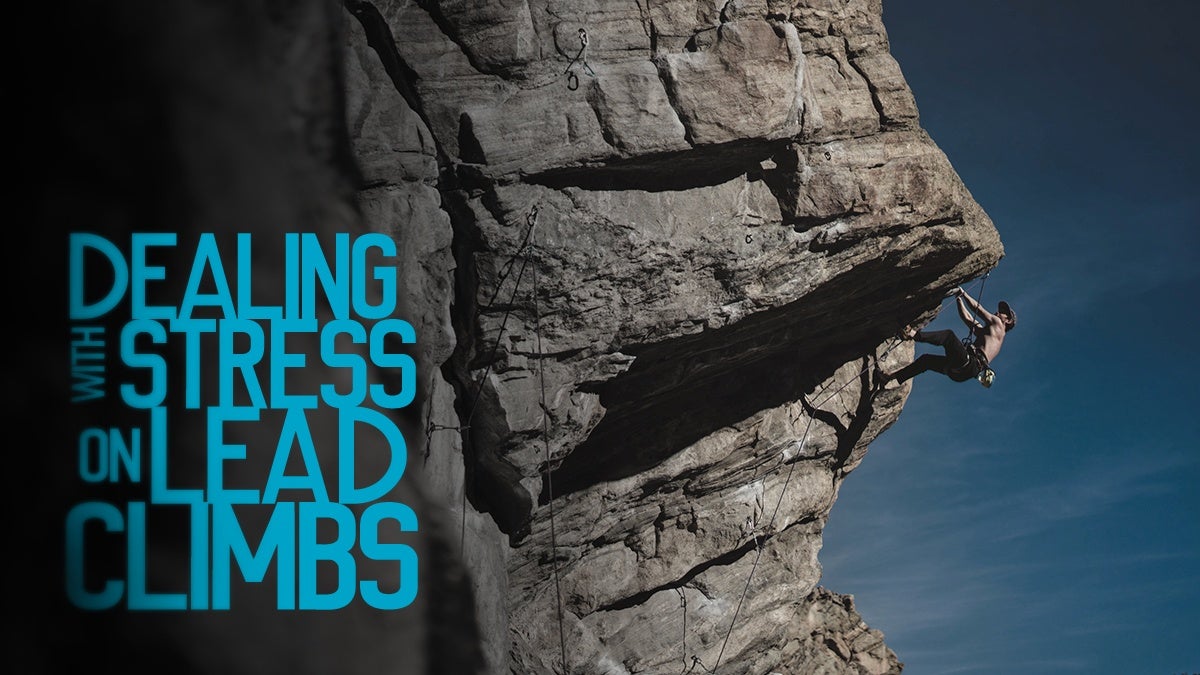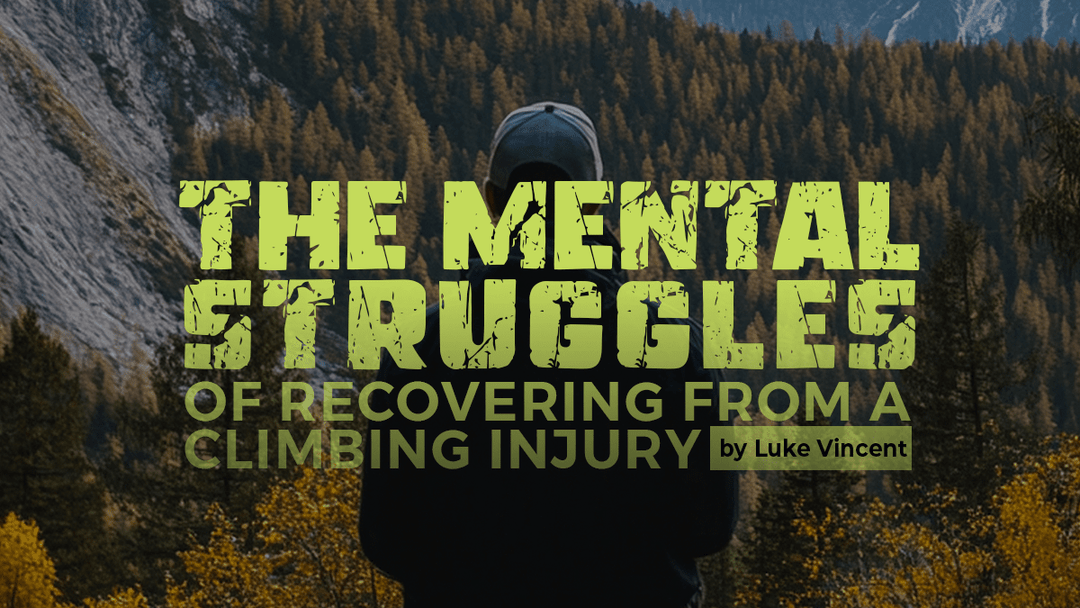Dealing With Stress on Lead Climbs

Many new climbers have experience top-roping before they ever attempt their first lead climb, but still, lead climbing is often a stress-inducing event. It’s interesting that an individual capable of cleanly climbing a 5.10 on toprope might experience anxiety during a 5.7 lead climb. Naturally, lead climbing can be scarier than top-roping because falling on lead means you’re going to fall through the air.
While we can’t ever remove all the fear associated with a lead climb, we hope to provide you with a few tips and tricks to help mitigate the stress you’re experiencing during your adventures. Whether you’re a brand new lead climber that will be attempting your first single-pitch route soon, or you’re a season multi-pitch climber that occasionally struggles with their fear of heights, we hope to provide you with some strategies that will help you cope with stress on your next climb.
Below are a few tactics for overcoming stress while on a lead climb:
Learn to Trust Your Gear
Many new climbers are afraid that their gear won’t catch them during a fall. You should thoroughly read up on the proper application and limits of your equipment. If you don’t have a thorough understanding of what your hardware is capable of, you’re going to be very stressed out –and possibly placing yourself in a dangerous situation.
Try going out to a steep climb and use your gear to aid climb up the wall, you will quickly learn what placements you can and can’t trust. If you don’t want to aid climb, try leaning back on gear you’ve placed or planning small falls. Improving your gear placements will make you a better climber, and having more trust in your equipment will reduce your stress levels.
Master Your Rope Systems
You need to have a mastery of your rope systems. Getting tripped up during your lead by a tangled mess of ropes can be dangerous and stress inducing. Knowing where your ropes are and precisely what they’re doing will give you one less thing to think about, and decrease your anxiety. You want your equipment to work with you, not against you.
Use Visualization
Many climbers (or non-climbers) that are dealing with anxiety tend to focus on what might go wrong rather than what you want to go right. If you’re busy thinking about what can go wrong, it’s easy to become bogged down in negative thoughts and freeze up. Visualize the exact climbing moves you want to make, and how effortlessly they are going to look when you make them. This type of positive visualization will mitigate anxiety and can be a powerful tool for improving your mindset while climbing.
Don’t Look Down
Some climbers love the adrenaline associated with being up high on a mountain, while others despise it. It’s natural to be afraid of heights, humans have evolved with a fear response to falling, and even the most hardened of climbing veterans experience some level of fear when they’re exposed on a climbing route. If you’re the type of mountain athlete that struggles with their fear of heights, there’s no reason to focus on how high you are. Keep your eyes on the rocks immediately in front of you. It will help you feel more grounded and more focused on the moves at hand.
Trust Your Instincts
If you have a bad feeling about a particular climbing route, you don’t need to climb it. Many variables might make you uncomfortable with a specific climb. Maybe it’s a grade more difficult than you’re used to, a type of rock you’re uncomfortable on, or you’re just having an off day. If you press on and start a climb you’re concerned about (for whatever reason), you’re setting yourself up for an unnecessarily stressful day.
You’re better off not getting on a route you have any reservations about. Even if your climbing partner is relying on you to be their leader or belayer, you can pick a different route or come back another day.
Climb With Partners You Trust
Having the right partner is essential for controlling your stress levels on any climbing route. You rely on your partner to keep you safe, whether they’re your leader or belayer. Only climb with a partner that consider safety a priority.
Knowing that you’re out in the mountains with a partner who is reliable, calm, and knowledgeable regarding their knots and rope systems will take a load off your back and allow you to focus on your lead climbing.
Take Baby Steps
Start small and work your way up. If your hardest lead climb ever is a two-pitch 5.6, your next lead should not be a three-pitch 5.8. Climbing is supposed to be fun, and trying to take huge leaps in your climbing ability is setting you up for a panic attack halfway up the wall. With each climbing day, you can try going a little bit higher or conquer a route that’s a slightly more difficult grade, but there’s no reason to push way beyond your comfort zone.
Wear a Good Pair of Shoes
Nothing is more stress-inducing than wearing a lousy pair of climbing shoes while you’re on lead. Fearing the soles of your shoes will slip in the midst of a crux move is terrifying, so make sure your shoes are staying in good shape.





